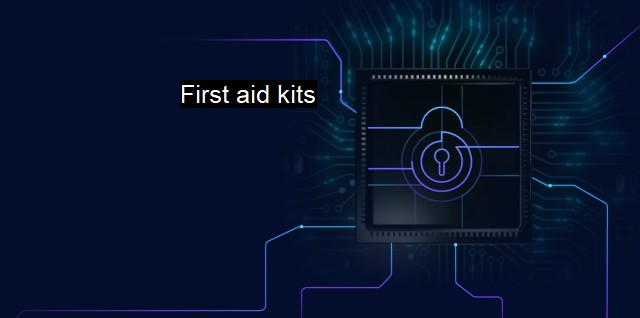What are First aid kits?
Secure Your Digital World: The Importance of First Aid Kits for Cybersecurity and Antivirus Protection
First aid kits are essential in the world of healthcare as these comprehensive sets offer resources to manage pressing health issues in times of emergencies. This concept also plays a vital role in the sphere of cybersecurity, positioning as the first line of defense against digital threats. A “first aid kit” in the realm of cybersecurity is more metaphorical and represents a set of tools, practices, measures, and knowledge curated to respond swiftly and efficiently to any kind of cybersecurity threat.A digital first aid kit holds immense importance in maintaining the health of a system in the vast ecosystem of internet technology, preventing it from falling prey to malicious software, hackers, espionage enthusiasts, or cyber-criminals. Just as a physical first aid kit comprises bandages and disinfectants to look after cuts, wounds, and burns, a cybersecurity first aid kit contains scanning tools and utility software that can identify, isolate, and mitigate the damage done by various types of malware, such as viruses, Trojans, adware, or ransomware.
Antivirus software is prominent in a cybersecurity first aid kit. As its name suggests, an antivirus program is akin to a doctor, prescribing the initial course of treatment against the widespread of viral infections. Antivirus programs are designed to root out any traces of malware buried deeply within the system files. It detects patterns and behaviours that are typical of a viral infection. Upon detection of such anomalies, it will quarantine and delete the threat, abrupting its life cycle within the confined spaces of the hard drive. As such, it's of utmost importance that antivirus software is regularly updated so as to be capable of combating the latest stuff of internet nightmares.
Another tool often found in a digital first aid kit is a firewall. Firewalls act as a barrier between your internal network and potential external threats from the internet. They monitor and control incoming and outgoing network traffic based on an organization's previously determined security policies, acting as the first line of defense in network security.
Adding to these, comprehensive suites of automated system scans and diagnostic tools often form the heart of the cybersecurity first aid kit. These tools diligently scan every nook and corner of the vast data labyrinth we call hard drives, all to locate any specks of potentially harmful items. By performing frequent scans and routine check-ups, the user can be confident about the secure status of their digital assets.
Nonetheless, the digital first aid kit not only secures, but also educates and informs of the risk assessment methods, personal threat modeling, digital security planning, creating strong passwords and two-step verification, end-to-end encryption, anonymization, conscious browsing habits, and the overview of digital rights and freedoms. This knowledge is of vital importance, allowing users to remain vigilant in protecting their own spaces in cyberspace.
Just as a physical first aid kit is never complete and always demands new additions depending on the changing environment and risk, a cybersecurity first aid kit too demands constant updating and upgrading depending on the changes in the digital environment. The evolving methods and newly developed tools by cybercriminals require users to be in line with the latest software patches, defense mechanism updates, and antivirus definitions.
In practice, a first aid kit in cybersecurity aids in sustaining and maintaining digital health by providing the immediate and necessary response tools to counter any given threat effectively and efficiently. That’s why it is of utmost importance that users prioritize cybersecurity, keeping their first aid kits well-equipped and up to date. Time spent in preparation and prevention can pay dividends when it comes to the security of individuals and organizations in the digital realm.
So in the realm of cyberspace, cybersecurity and antivirus fit into the metaphorical concept of a "first aid kit". This kit helps businesses, organizations, and individuals to establish a secure, robust, and trustworthy digital environment that is resilient against various cyber threats, while also ensuring a quick and efficient response to any cyber threat.

First aid kits FAQs
What should a basic first aid kit for cybersecurity contain?
A basic first aid kit for cybersecurity should contain antivirus and anti-malware software, firewalls, and backup software.What are the benefits of having a first aid kit for cybersecurity?
A first aid kit for cybersecurity can help prevent and mitigate potential cyber attacks, protect sensitive data and information, and ensure business continuity in case of a cyber incident.How often should a first aid kit for cybersecurity be updated?
A first aid kit for cybersecurity should be updated regularly, ideally every six months or after any major system updates or changes. It's also important to stay up-to-date with the latest cybersecurity threats and trends and adjust your first aid kit accordingly.How can I ensure that my first aid kit for cybersecurity is effective?
To ensure that your first aid kit for cybersecurity is effective, make sure to test your software and backup systems regularly. It's also important to have a clear plan and protocol in place for responding to cyber incidents and to train your staff on best cybersecurity practices.| | A | | | B | | | C | | | D | | | E | | | F | | | G | | | H | | | I | | | J | | | K | | | L | | | M | |
| | N | | | O | | | P | | | Q | | | R | | | S | | | T | | | U | | | V | | | W | | | X | | | Y | | | Z | |
| | 1 | | | 2 | | | 3 | | | 4 | | | 7 | | | 8 | | |||||||